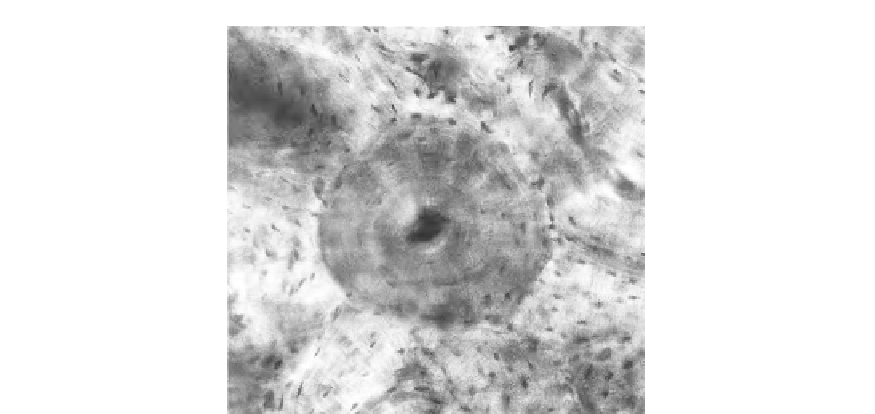Biology Reference
In-Depth Information
FIGURE 13.3
Secondary osteon surrounded by reversal line.
non-Haversian systems. Primary osteonal bone and non-Haversian bone are present in both
human and nonhuman bone. The organization of these and the differentiation of secondary
osteons from primary osteons can help separate human from nonhuman bone (
Jowsey, 1966;
Mulhern and Ubelaker, 2001; Horni, 2002
).
Primary osteonal bone is different than secondary osteonal bone in its method of forma-
tion and in its level of structure. It is believed that primary osteons are formed via the miner-
alization of cartilage while secondary osteons are the result of a remodeling process that
replaces existing bone (
Frost, 1964; Sharpe, 1979
).
Primary osteons are usually smaller than secondary osteons (
Figure 13.4
) and tend to have
fewer concentric rings of lamellar bone. They do not have cement reversal lines separating
them from lamellar bone as is definitive of secondary osteonal bone (
Frost, 1964; Kerley,
1965; Lacroix, 1971; Recker, 1983; Martin and Burr, 1989; Hall, 2005
).
Bone Formation
There are two models of bone growth. The first, endochondral ossification, meaning
“within cartilage,” creates bone by replacing hyaline cartilage-formed models. This is
common in the long bones of the appendicular skeleton. The second model, intramembra-
nous ossification, creates bone from a fibrous membrane. This is common in the bones of
the neurocranium and other flat bones such as those of the face and pelvis. We review these
processes below, but
Scheuer and Black (2000)
provide a detailed discussion to which you
should refer to learn more.
Endochondral Ossification
As mentioned, growth of long bones occurs as a result of endochondral ossification. This
model
involves a specific sequence of events beginning in the second trimester of

